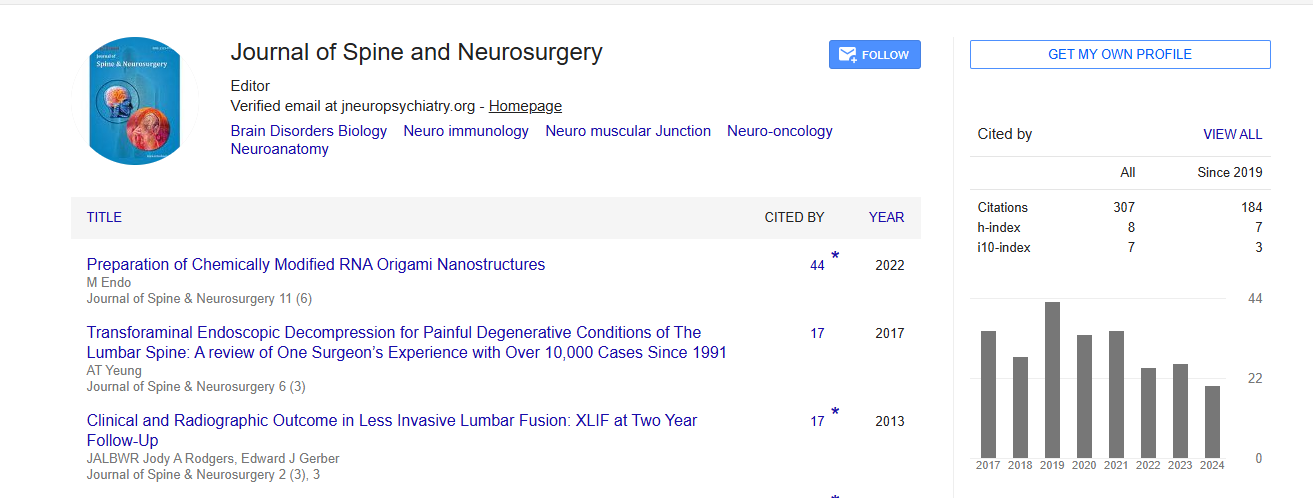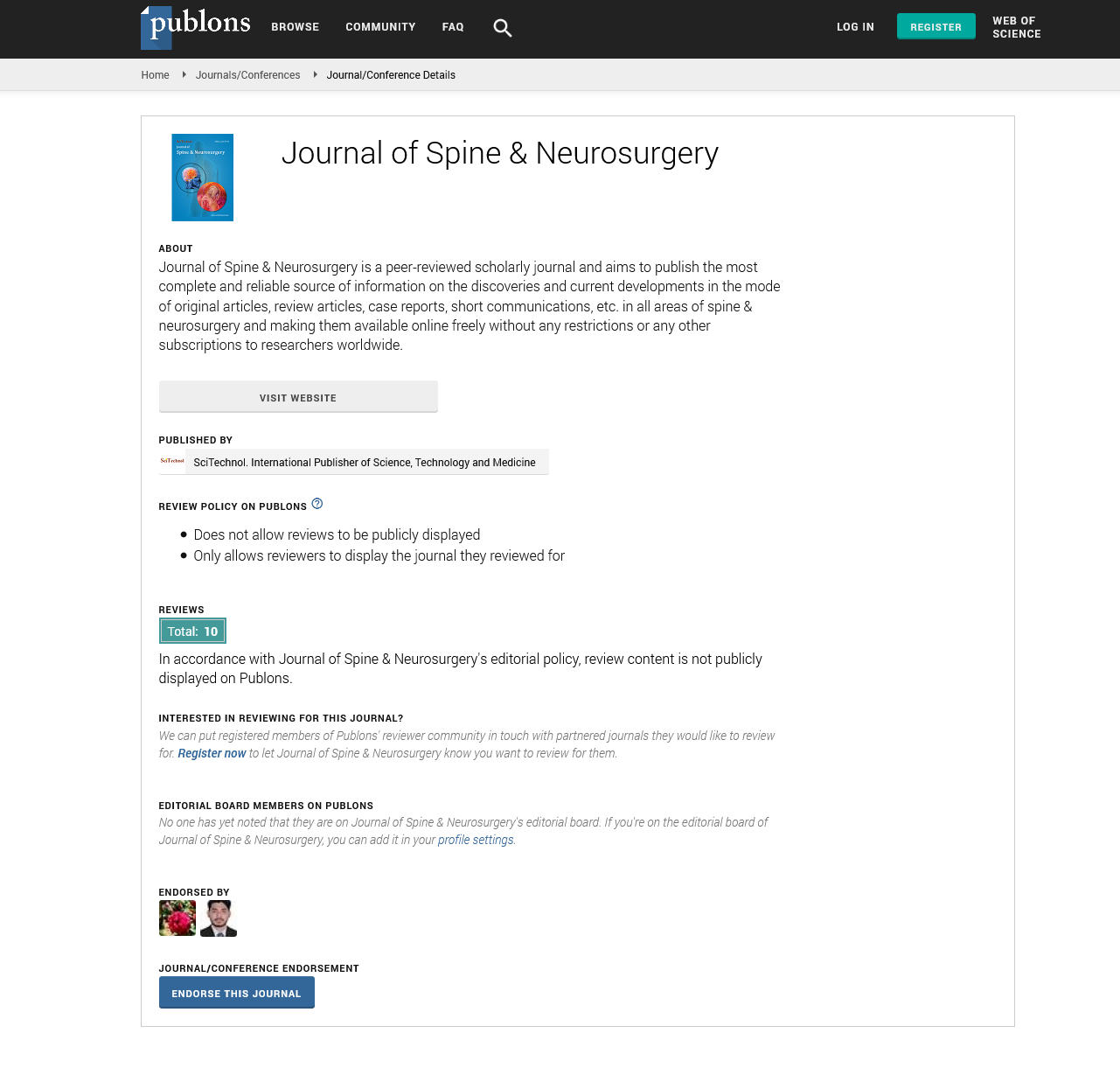Research Article, J Spine Neurosurg Vol: 6 Issue: 2
Advancement of Surgical Visualization Methods: A Comparison Study between Traditional Microscopic Surgery, the Endoscope and a Novel Robotic Optoelectronic Visualization Tool for them Transnasal Transsphenoidal Approach to the Sellar Region
| Moisi MD1,2,3*, Fisahn C1,2,4, Hoang K5, Buchanan P1, Klinger D1, Tubbs RS2, Page J1, Cobbs C1, Backous D1 and Delashaw J1 | |
| 1Swedish Neuroscience Institute, Swedish Medical Center, Seattle, Washington, United States | |
| 2Seattle Science Foundation, Seattle, Washington, United States | |
| 3Wayne State University, Detroit, Michigan, United States | |
| 4Department of Trauma Surgery, BG University Hospital Bergmannsheil, Ruhr University Bochum, Germany | |
| 5Duke University Medical Center, Durham, North Carolina, United States | |
| Corresponding author : Dr. Marc D. Moisi Swedish Neuroscience Institute, 550 17th Avenue, Seattle, WA 98122, USA Tel: (917) 679-9917l Fax: (206) 320-3944 E-mail: moisimd@aol.com |
|
| Received: October 05, 2016 Accepted: December 16, 2016 Published: April 20, 2017 | |
| Citation: Moisi MD, Fisahn C, Hoang K, Buchanan P, Klinger D, et al. (2017) Advancement of Surgical Visualization Methods: A Comparison Study between Traditional Microscopic Surgery, the Endoscope and a Novel Robotic Optoelectronic Visualization Tool for the Transnasal Transsphenoidal Approach to the Sellar Region. J Spine Neurosurg 6:2. doi: 10.4172/2325-9701.1000259 |
Abstract
With the entrance of the video microscope over the recent few years
into the microsurgery optical field, a third modality has emerged
alongside the endoscope and operating microscope to accomplish
some of the microsurgical procedures. One such approach
that could potentially utilize any of the three is the transnasal
transsphenoidal (TNTS) approach that provides access to the
anterior brainstem, the anterior skull base, and of course the sellar
region. Here, we provide a descriptive comparison of the three
modalities on cadaveric specimens with joint ENT and neurosurgery
teams performing the approach. Each provides unique advantages
and disadvantages as part of the surgeon�??s optical armamentarium.
As more optical devices become available to surgeons, selection
of the optimal device can present a challenge best compared by
head-to-head comparison. The aim of this paper is to compare
these modalities for the TNTS approach.
 Spanish
Spanish  Chinese
Chinese  Russian
Russian  German
German  French
French  Japanese
Japanese  Portuguese
Portuguese  Hindi
Hindi 
